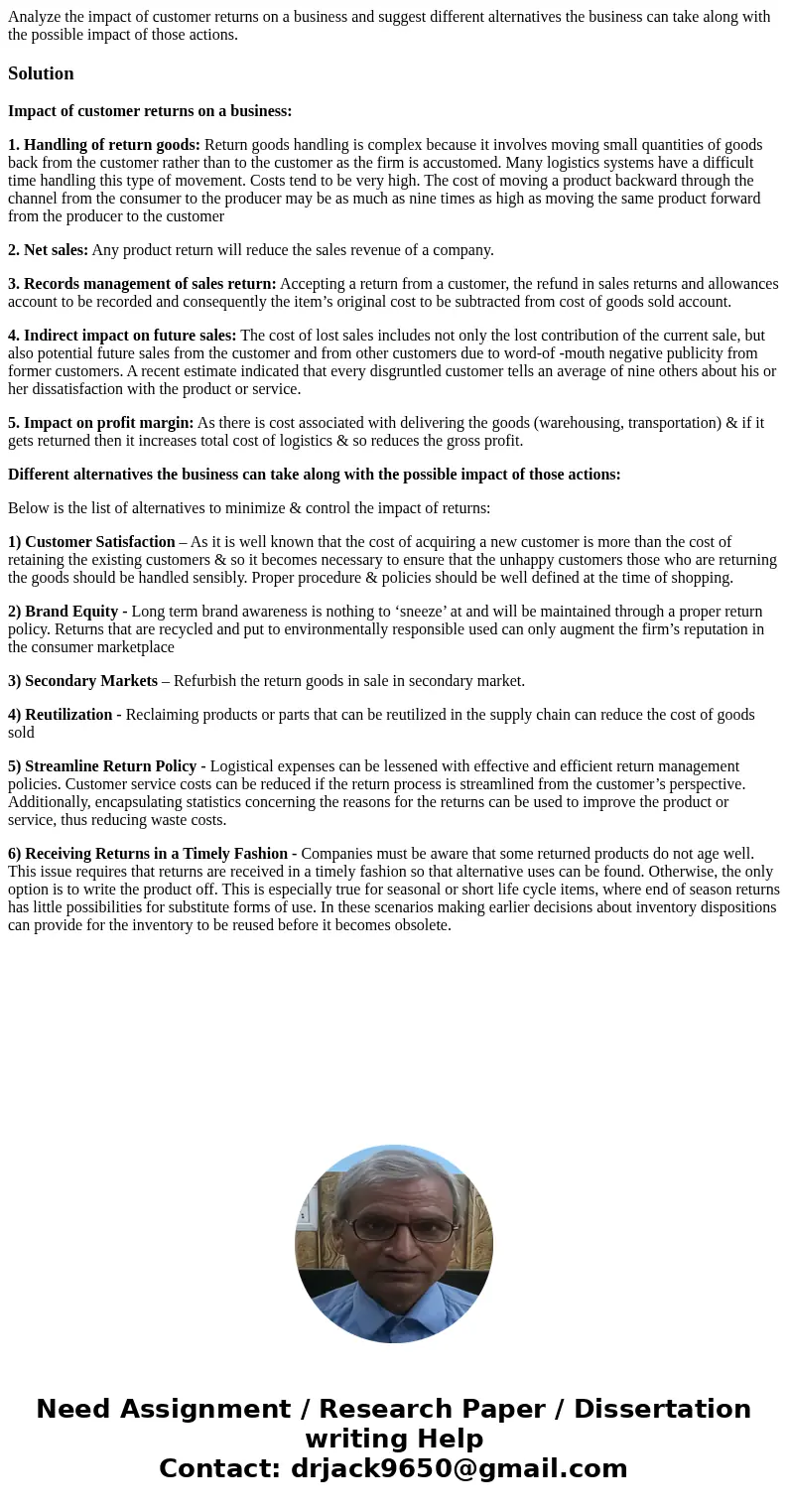Analyze the impact of customer returns on a business and sug
Analyze the impact of customer returns on a business and suggest different alternatives the business can take along with the possible impact of those actions.
Solution
Impact of customer returns on a business:
1. Handling of return goods: Return goods handling is complex because it involves moving small quantities of goods back from the customer rather than to the customer as the firm is accustomed. Many logistics systems have a difficult time handling this type of movement. Costs tend to be very high. The cost of moving a product backward through the channel from the consumer to the producer may be as much as nine times as high as moving the same product forward from the producer to the customer
2. Net sales: Any product return will reduce the sales revenue of a company.
3. Records management of sales return: Accepting a return from a customer, the refund in sales returns and allowances account to be recorded and consequently the item’s original cost to be subtracted from cost of goods sold account.
4. Indirect impact on future sales: The cost of lost sales includes not only the lost contribution of the current sale, but also potential future sales from the customer and from other customers due to word-of -mouth negative publicity from former customers. A recent estimate indicated that every disgruntled customer tells an average of nine others about his or her dissatisfaction with the product or service.
5. Impact on profit margin: As there is cost associated with delivering the goods (warehousing, transportation) & if it gets returned then it increases total cost of logistics & so reduces the gross profit.
Different alternatives the business can take along with the possible impact of those actions:
Below is the list of alternatives to minimize & control the impact of returns:
1) Customer Satisfaction – As it is well known that the cost of acquiring a new customer is more than the cost of retaining the existing customers & so it becomes necessary to ensure that the unhappy customers those who are returning the goods should be handled sensibly. Proper procedure & policies should be well defined at the time of shopping.
2) Brand Equity - Long term brand awareness is nothing to ‘sneeze’ at and will be maintained through a proper return policy. Returns that are recycled and put to environmentally responsible used can only augment the firm’s reputation in the consumer marketplace
3) Secondary Markets – Refurbish the return goods in sale in secondary market.
4) Reutilization - Reclaiming products or parts that can be reutilized in the supply chain can reduce the cost of goods sold
5) Streamline Return Policy - Logistical expenses can be lessened with effective and efficient return management policies. Customer service costs can be reduced if the return process is streamlined from the customer’s perspective. Additionally, encapsulating statistics concerning the reasons for the returns can be used to improve the product or service, thus reducing waste costs.
6) Receiving Returns in a Timely Fashion - Companies must be aware that some returned products do not age well. This issue requires that returns are received in a timely fashion so that alternative uses can be found. Otherwise, the only option is to write the product off. This is especially true for seasonal or short life cycle items, where end of season returns has little possibilities for substitute forms of use. In these scenarios making earlier decisions about inventory dispositions can provide for the inventory to be reused before it becomes obsolete.

 Homework Sourse
Homework Sourse